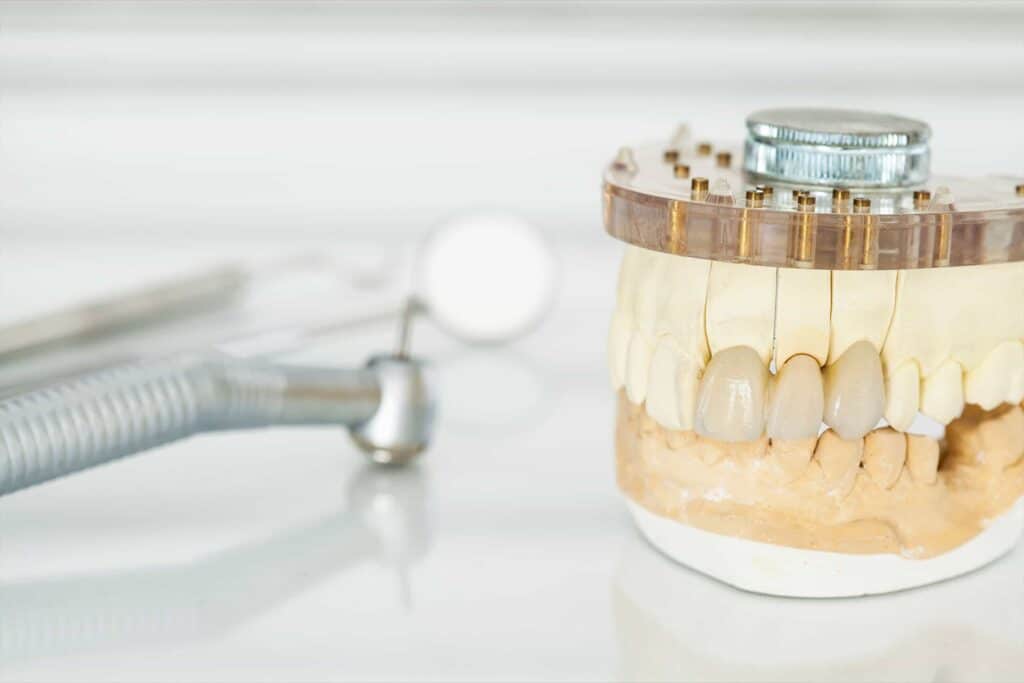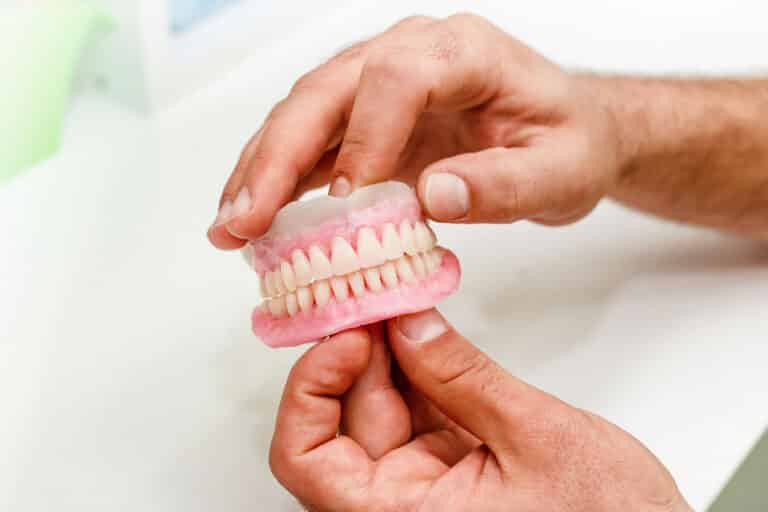As one of the most common procedures completed, dental fillings are routinely used to treat tooth decay. Dental cariesMost commonly known as a tooth cavity, dental caries refers to decay and rot of the tooth. The breakdown of the enamel and/or dentin is caused by oral bacteria leaving acid on the teeth as a by-product of food consumption. Dental caries is referred to by various names including cavities, tooth rot, and decay., also known as cavities, are one of the most common diseases affecting humans. Many people are affected and an easy treatment option is a dental filling. The two most common types of fillings are amalgam fillings and compositeA synthetic resin that is used for while fillings. This is what most people receive when they get fillings. resin fillings. With the higher esthetic demands and opposition to amalgam fillings, composite resin fillings are used more and more as the treatment of choice.
What are Dental Composite Fillings?
Composite fillings are a synthetic resin that is tooth colored. When a cavity forms in a tooth, the rotted part of the tooth needs to be removed and then is filled and bonded in place using a composite resin filling. These are called direct dental restorations, as they are placed, formed, and cured directly in the mouth. This differs from indirect dental restorations such as dental crowns, which are fabricated outside of the mouth and then bonded in the mouth.
These white fillings are becoming more and more popular than their dental amalgamA mercury metal alloy that is used to replace missing tooth structure. Also known as metal, silver, or mercury fillings, they are widely used in dentistry due to it’s physical properties, cost, and ease of use. Although multitudes of studies have shown amalgam to be safe, concerns regarding toxicity and environmental factors have shifted towards the use of dental composite. filling counterparts. Amalgam fillings, also known as silver, mercury, or metal fillings, were once extremely popular and were the dental filling material of choice. Even with a large body of evidence supporting the safety and efficacy of a dental amalgam filling, it’s popularity declined due to the fact that mercury is used in addition to the unaesthetic appearance of dental amalgam.
Amongst composite fillings, there are also varying compositions within resin-based restorations. These include microhybrid, microfilled, nanohybrid and nanofilled1https://meridian.allenpress.com/operative-dentistry/article/34/5/551/107012/Nanohybrid-Resin-Composites-Nanofiller-Loaded.
A big difference between these resins is the different sized particles that comprise the actual resin itself. Imagine if you have a few buckets that are filled with varying sized large rocks, small pebbles, or a combination of the two. Each composition will have different physical properties such as better polishability or increased strength.
As composite fillings improved and became more widely accepted, dental amalgam fillings have seen a marked decline in use. Many patients worry about any mercury exposure which can affect their overall health, despite significant evidence stating otherwise.
However, regardless of what any amount of literature states, people must choose which material they are most comfortable with. This also includes dentists as well, many of whom have stopped using dental amalgam fillings altogether.
Another critical aspect is the esthetics of the dental fillings. Even though dental amalgam fillings have substantial research that substantiates their safety and efficacy, they will always be more unesthetic as compared to composite fillings. There is virtually no substance behind an argument advocating that an amalgam filling mimics natural teeth better than a composite filling.
As composite filling technology improves, we may see an eventual phasing out of dental amalgam. However, there are a few ‘old school’ techniques which utilize dental amalgam which may still be used.
What Other Tooth Colored Fillings are There?
Outside of resin composite materials, there are also other materials that are used such as glass ionomer. Still a tooth colored filling, glass ionomer has different physical properties that may work better in certain circumstances. One advantage that glass ionomer has over resin is its anticariogenic properties due to its fluoride release, meaning this filling material is more resistant to tooth decay. It even has the ability to “recharge” its fluoride content2https://www.sciencedirect.com/science/article/abs/pii/S0142961297001300. This material type may be superior material of choice for areas that are prone to cavities such as root caries.
However glass ionomer tends to be weaker and not suitable to withstand heavy and repeated cycles of chewing. This can be offset to some degree with the addition of resin, which is another type of white filling called resin modified glass ionomer. However it is still not as strong as other resin composites that were specifically designed for heavy chewing forces in the posterior. While these are simplifications of the different compositions, know that whichever material is chosen is used specifically for that tooth to give the best results.
There are also different materials that incorporate ceramic material in an attempt to improve the physical properties. With the addition of 3D printing technology, there are even indirect restorations and crowns that are 3D printed. Some of the companies that produce these resins even claim similar strength as traditional crown materials, however more studies and time will show the efficacy of these materials.
Are Composite Fillings Safe?
There are always risks involved with every procedure, however, composite fillings have few risks and are considered to be a very safe procedure. The risks associated with composite resin fillings are virtually the same with other basic bread and butter dentistry procedures.
There will always be the general risk of soreness and sensitivity right after the filling procedure. These post operative complications usually are gone within a few days to a week. The other larger risk with composite resin fillings has more to do with the size and extent of dental decay, also known as cavities.
When cavities are small, the decay will not have gotten close to the nerve. If untreated, further damage to the tooth continues as the cavity continues to eat through the tooth or teeth. As the decay progresses and gets closer and closer to the nerve, the risk of insult and damage to the nerve becomes higher and higher. With enough repeated insults to the nerve, the nerve must be removed and replaced in a procedure called a root canal. In other words, the bigger the cavities, the more likely a root canal will be needed to save the tooth, regardless of the filling material used.
What are the Advantages of Composite Filling?
There are quite a few advantages to composite resin fillings over amalgam fillings. The primary advantages include better esthetics, direct bonding to tooth structure, and a more conservative preparation design. There is even a different tooth colored material called glass ionomer that, while not composite resin, is even more resistant to cavities.
Esthetic Advantages of Composite Resin Fillings
Perhaps the most obvious advantage of composite material over silver fillings is the fact that they blend in more naturally. As metals are not natural in humans, it’s appearance in teeth will immediate be spotted. Even a filling not in the smile line or front teeth may still be visible. This will depend on the smile line of the various patients.
Bonding Advantages of Composite Resin Fillings
Composite material has the ability to directly bond with part of the tooth. This bond is part of how a composite filling is retained within each tooth or teeth. After the tooth has been prepared and the cavity has been removed by a dentist, the composite material can be bonded to improve the retention and help seal out the margins. Ensuring proper bonding and curing is critical to make sure there is no marginal leakage.
Keep in mind that while composites are bonded to the tooth, this does not mean that the tooth is stronger after fillings are done. The bond is not strong enough to resist the repeated biting forces generated during chewing.
A general rule of thumb is that regardless of the filling type, a dental filling will make the tooth healthier, but weaker. The reduction in strength makes the tooth more prone to fracture and depending on the size of the filling itself, the tooth may need fracture protection via a dental crown.
Conservative Preparation Design
Compared to silver fillings, composite resin fillings are more conservative in tooth removal. Whenever a filling is done using metals, composite, or otherwise, the tooth needs to be prepared following specific mechanical and biological rules. Disregarding these rules can result in early failure of the filling regardless of the materials used.
After the dental caries has been removed additional tooth structure such as unsupported enamelThe outermost layer of a tooth. Highly mineralized and resistant to decay. must be removed. Dental composite fillings tooth preparations can be more conservative when compared to teeth prepped for silver fillings.
This is always an advantage as removal of less tooth structure is incredibly important due to the inability to naturally regenerate tooth structure. Unfortunately once any part of teeth is lost, it cannot be predictably rebonded back into place.
Glass Ionomer Advantages
Glass ionomer is another tooth colored material that is used for dental fillings. Although this material is not indicated for every instance of dental decay, it is a versatile treatment option. Glass ionomer has direct bonding to the dentinThe layer of tooth between the enamel and pulp chamber. of teeth and also has fluoride release.
These two aspects allow for an even more conservative preparation design and also reduce the odds of the tooth becoming re-decayed, also known as recurrent cariesDental caries that reoccurs at the margin of an existing restoration.. The downside is that glass ionomer is not a strong material and it doesn’t polish as nicely as resin composite. While you can still get a beautiful smile with glass ionomer, there are more esthetic materials.
Due to this, glass ionomer is not a universal material that can be used in every instance. Rather it is better suited for specific areas to repair or can it be used as a base layer on top of other restorative materials like resin composite in a technique called an open sandwich filling.
What are the Disadvantages of Composite Resin Fillings?
While an extremely versatile material there are of course disadvantages to resin composite. The process requires a dry field as moisture impedes proper bonding and curing of the composite. This can be extremely difficult since the mouth is inherently a wet environment due to saliva. Additionally, the soft tissues and tongue can make it difficult.
Polymerization Shrinkage
When composite is cured, the total volume of the material shrinks. The shrinkage is not extreme, there is still shrinkage. This has a few important consequences. The first is that the material may pull back from the marginThe interface between a restoration and the tooth. This is the most common area for a cavity to reoccur on a tooth., leading to a microleakage. Gaps between the tooth and restorative material allows for bacteria to accumulate, leading to recurrent decay.
Another consequence is something call the C-factor. This refers to how much the composite material itself pulls on the walls of the tooth. When the C-factor is high, it pulls on the actual tooth itself and can lead to issues. This is why composite is often placed in layers, which helps to reduce the C-factor.
Technique Sensitive
Composite is a less forgiving material to be completed correctly. It requires an increased knowledge of how to blend the material seamlessly and placing the composite in layers for esthetic composites. Additionally, there are more ways for the dentist to make an error while doing the treatment.
Some errors include too much bonding agent, incomplete curing of the bond or composite, improper fill, moisture exposure, or improper contouring or shape to name a few. Other types of materials such as amalgam fillings are much more forgiving and do not have as many ways to error.
How Long do Composite Fillings Last?
Composite will generally last 7-10 years. They can of course last longer as well as shorter as well, however it is safe to assume that on average across most populations that they should last around a decade. If they are not well maintained with proper dental hygiene, they will not last as long.
There are other factors that also come into play that will affect the longevity. Some may need to be replaced sooner than later.
The Size
General rule of thumb, the smaller the filling, the longer it will last. Many dentists have placed and seen very small fillings that have lasted much longer than 10 years that still look good. Once the fillings gets to be bigger, your dentist may recommend placing a dental crown to protect the tooth from breaking.
The Location
The location also plays a role as fillings that are placed in hard to reach areas will not last as long. This is because they are hard to clean, which plays a big role in the longevity. A small occlusalThe ‘top’ of teeth where chewing occurs on posterior teeth. This surface has pits and grooves. filling is easy to clean and may last up to a few decades as opposed to a large interproximal filling that extends significantly under the gingiva.
Personal Dental Hygiene
A lot of ‘dentistry’ is done at home. Even the perfect restorations will fail if they are not cleaned and maintained. Be sure to properly care for your teeth, as even the most durable material will fail when not cared for.
The Bite and Occlusal Scheme
When the jaws and teeth are not in the ideal alignment, certain teeth will take increased biting forces which will lead to premature fracture. For instance, a heavy grinder will most likely fracture a large front filling faster than someone who does not grind.
Additionally, when the teeth are not coming together harmoniously, the bite may lead to excessive force when chewing. This can also lead to premature breaking of the teeth. Luckily this can be averted with orthodontics to place the teeth where they need to be.
What Happens During a Composite Filling Procedure?
Once settled and vitals and the health history have been reviewed, first the dentist will numb the tooth. Once numbed, the rotted part of the tooth is removed and the are that was removed is shaped appropriately. The removal of any existing filling material is also done at this stage as well. The tooth is shaped appropriately according to specific biological and mechanical rulesets. Then the tooth is ready to fill.
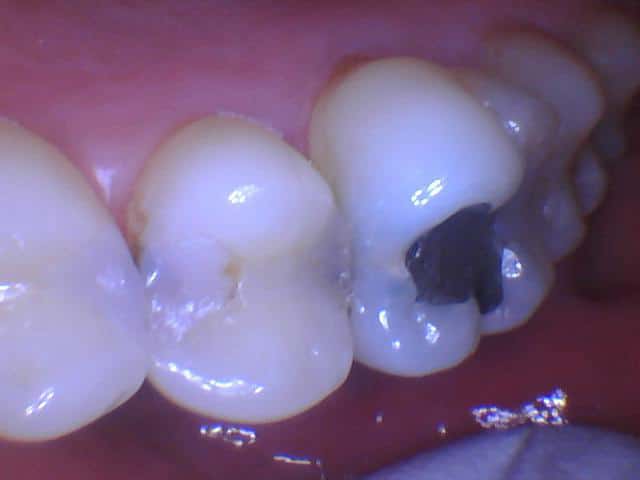
The tooth is then isolated using either a rubber damA square piece of rubber, typically containing latex, that has a small hole which one or more teeth pass through. It isolates the tooth and acts as a barrier from the rest of the mouth and is used for many dental procedures, especially root canals. There are non-latex versions available for those allergic to latex. or cotton. Then various matrix systems are used to shape the area to be filled. This also allows to re-establish contact between the teeth as well. The cavity preparation is typically etched to aid in bonding by removing the smear layer. Then various types of prime and bond are placed, dried and cured. Depending on the location of the filling and the material used, the composite is then placed incrementally and cured to fill in what was taken away during the caries excavation.
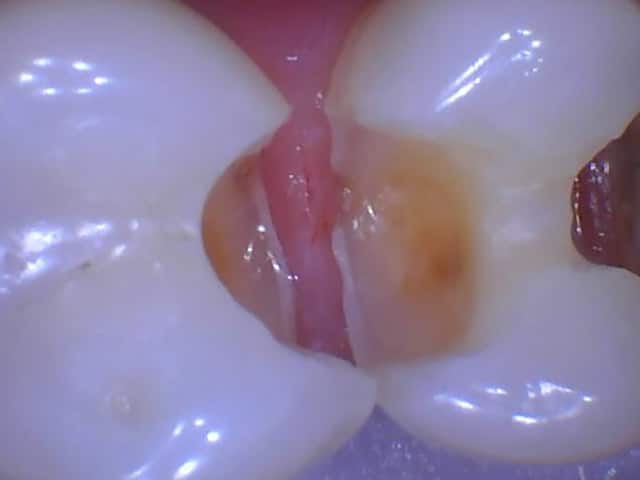
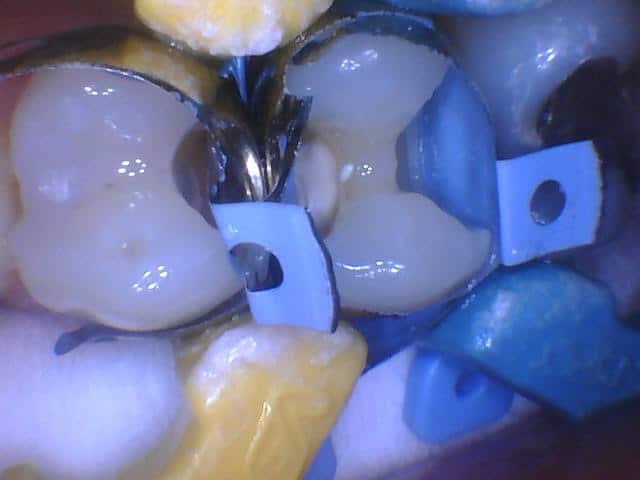
Once fully cured, the matrix system is removed and the composite is then cleaned and shaped to blend in with the natural tooth. This entire process takes just one visit to accomplish, however more than a single visit may be necessary depending on how many cavities are present.
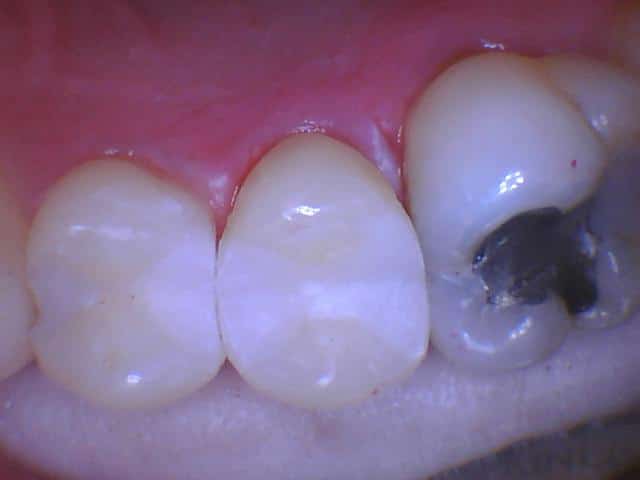
How Long do Composite Fillings Take?
This varies greatly depending on the skill level of the dentist as well as the complexity of the composite filling itself. Some small fillings may take as few as a couple of minutes, while the larger and more complex ones may take 15-20 minutes to complete.
Additionally if there are multiple fillings next to each other, many people and dentists like to complete them at the same time. This usually doesn’t mean that two fillings that would normally take 5 minutes would now take 10. When fillings are done on adjacent teeth, many steps can be done at the same time which reduces the overall time spent during the procedure.
Will Dental Insurance Cover a Composite Filling?
Yes, most insurances will have some type of coverage for composite fillings. Since they are extremely common and can prevent the immediate need of more invasive and costly procedures, many insurance companies will cover them.
The amount of coverage will vary greatly between insurance companies as well as the participation status of each dentist. One other aspect that people need to be aware of is a clause called the amalgam downgrade clause.
What is the Amalgam Downgrade Clause?
Composite fillings are often more expensive than amalgam fillings. While insurance companies may cover fillings, if they have an amalgam downgrade clause, then that insurance will cover composite fillings at the rate of an amalgam filling.
Let’s look at a scenario for example. Let’s say an insurance company covers fillings at 80%. A dental office charges $100 for a single surface composite filling and $80 for an amalgam filling. If the insurance does not have an amalgam downgrade clause, that single $100 composite filling will be covered at 80%, meaning an out of pocket cost of $20.
If that insurance has an amalgam downgrade clause, they will still cover 80% of a filling, but only the amalgam cost. This means they will cover 80% of $80 or $64, even if the filling is still composite. This leaves an out of pocket cost of $36, a difference of $16 because of this clause.
Be sure you are aware of whether or not this clause is present in your insurance plan so you can plan accordingly.
How Much Does a Composite Filling Cost?
This will vary widely, however a good range is $50-$350 per filling. There is typically insurance coverage for fillings, assuming there is still an annual benefit remaining. The factors that affect the cost of a composite filling include:
- The size of the filling – larger fillings are more expensive.
- The material used – composite is usually more expensive than amalgam.
- Insurance benefits and coverage – an in-network dentist will charge less per filling.
Was this post helpful?
References
- 1
- 2


